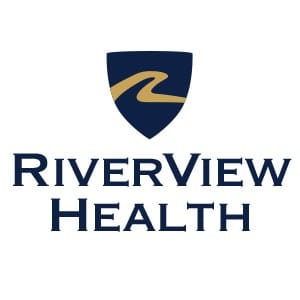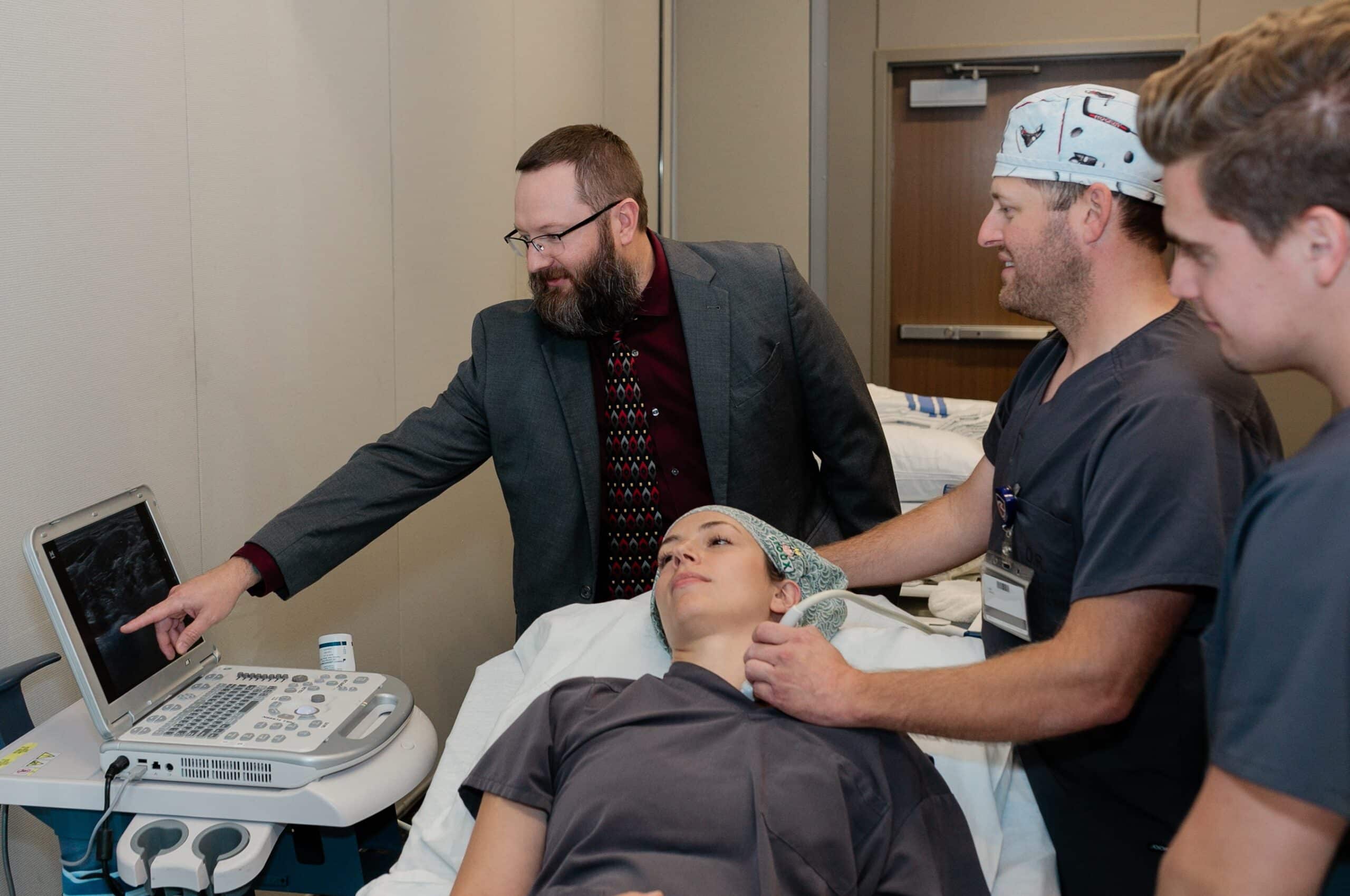Precision and speed are part of the job for RiverView’s Certified Registered Nurse Anesthetist (CRNA) Team. Whether performing a nerve block or preparing for emergency surgery, they need a crisp, detailed image of what’s happening inside their patients—ideally as it happens (real-time).
That is why ultrasound (US) for anesthesia has become an important part of their practice. Ultrasound visualizes nerves in real-time, helping RiverView’s CRNAs identify the best place to inject drugs to control pain. Compared to traditionally relying on physical landmarks, this technique reduces the risk of nerve damage or puncturing veins.
RiverView’s CRNA Team of Jeremy Eversvik, Brent Kaiser, Casey Wangen, and Chad Boen recently completed training for point-of-care ultrasound (POCUS) on techniques and advice for improving blocks they already perform and learned techniques and tips for new blocks they will be offering patients.
POCUS is the real-time bedside utilization of ultrasound to help diagnose and treat patients. Research shows that POCUS boosts efficiency, improves patient outcomes, and enriches quality of care.
Ultrasound-guided nerve block is among the most common uses of POCUS in anesthesiology. Using US for needle placement allows CRNAs to visualize nerve regions in real-time, identifying where to place the needle and continuously viewing where the needle is located in relation to nearby nerves and vascular structures.
POCUS enhances clinical decision-making in perioperative situations by assisting in assessing cardiac function, pulmonary function, aspiration risk, hemodynamics, vascular access, and nerve visualization for regional procedures.
According to Eversvik, director of RiverView’s Anesthesia Department, the team has been utilizing POCUS regularly for regional nerve blocks for many years. Compared to patients who receive general anesthesia during surgery, patients who undergo ultrasound-guided regional anesthesia recover quicker with fewer complications.
Now, with the new techniques the team has mastered, patients will benefit from longer-lasting pain relief. “With our new training, we have changed what medications we are using for interscalene (region of the neck) nerve block, which is the block we routinely use for post-op pain control following shoulder Surgery,” he shared. “This change has already been shown to benefit patients by extending post-operative pain control up to three days, whereas former block medications tended to last about 12 hours. With our training, We can also help with the placement of subclavicular (area below the collarbone or clavicle) lines/access. We can use ultrasound to access difficult subclavicular veins, which can help place pacemakers and implantable cardioverter defibrillators.”
Through the latest technology and continuous training, RiverView’s CRNA Team enhances patient care at RiverView Health one patient at a time.
Photo cutline: Casey Wangen (standing, wearing cap) trains on point-of-care ultrasound






